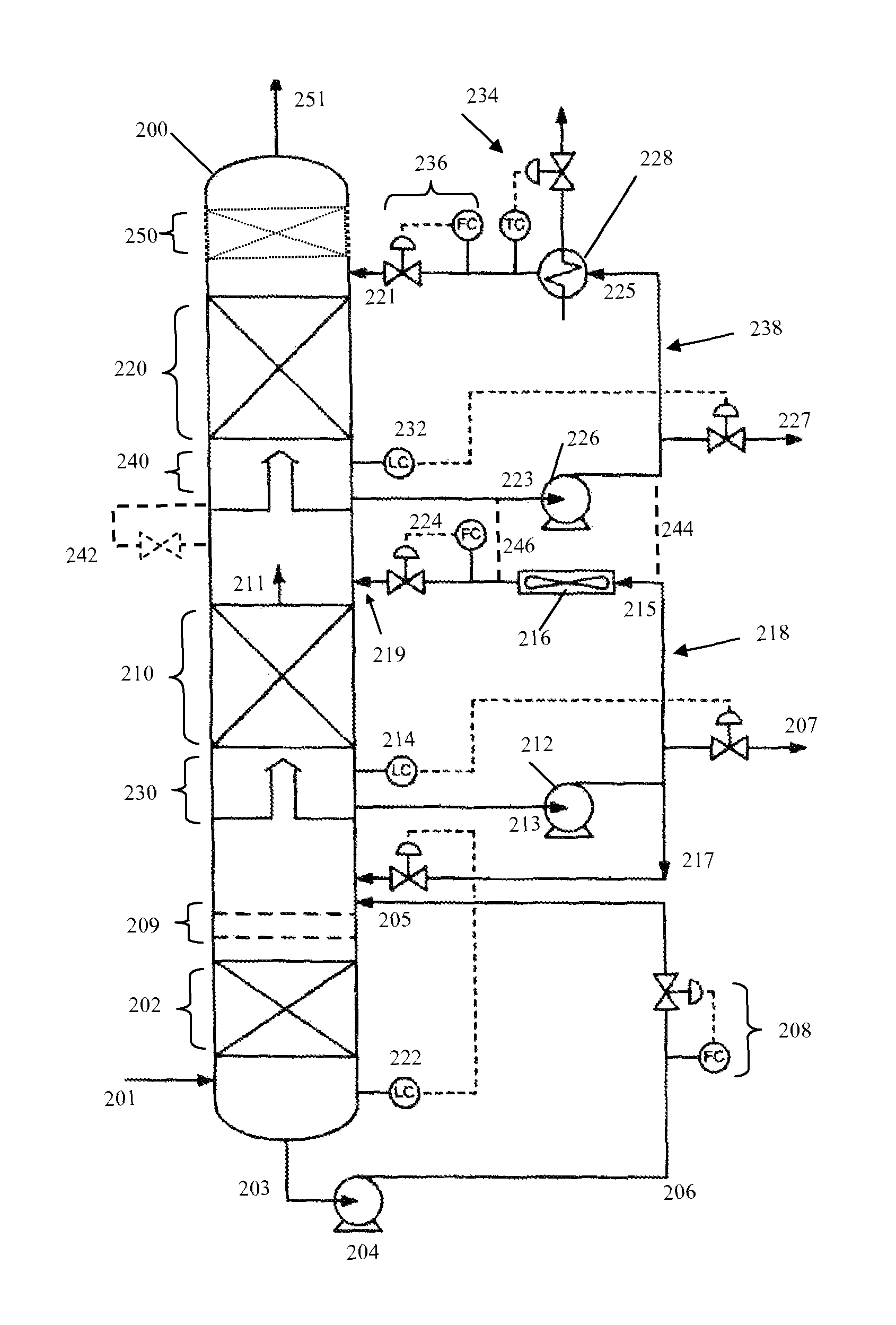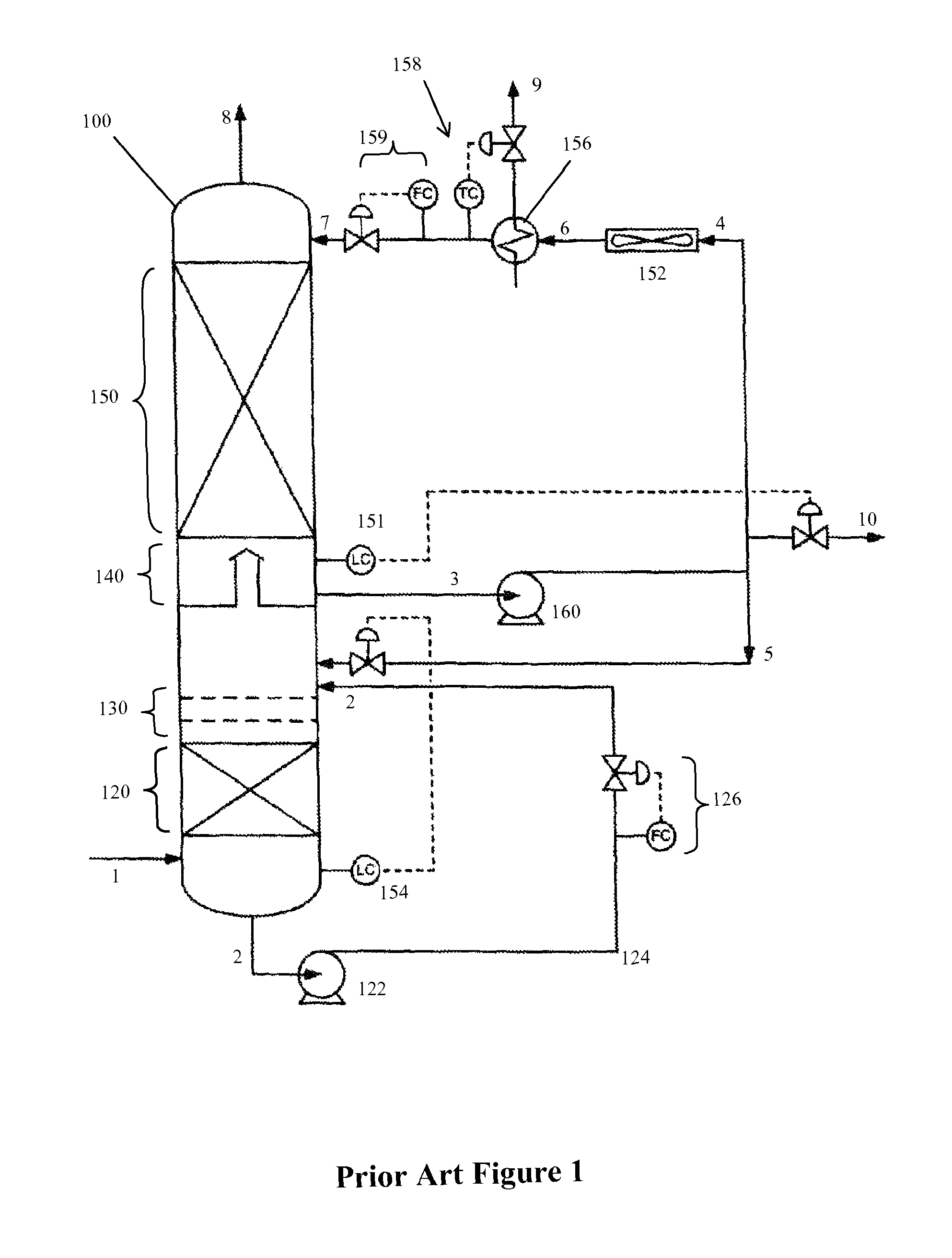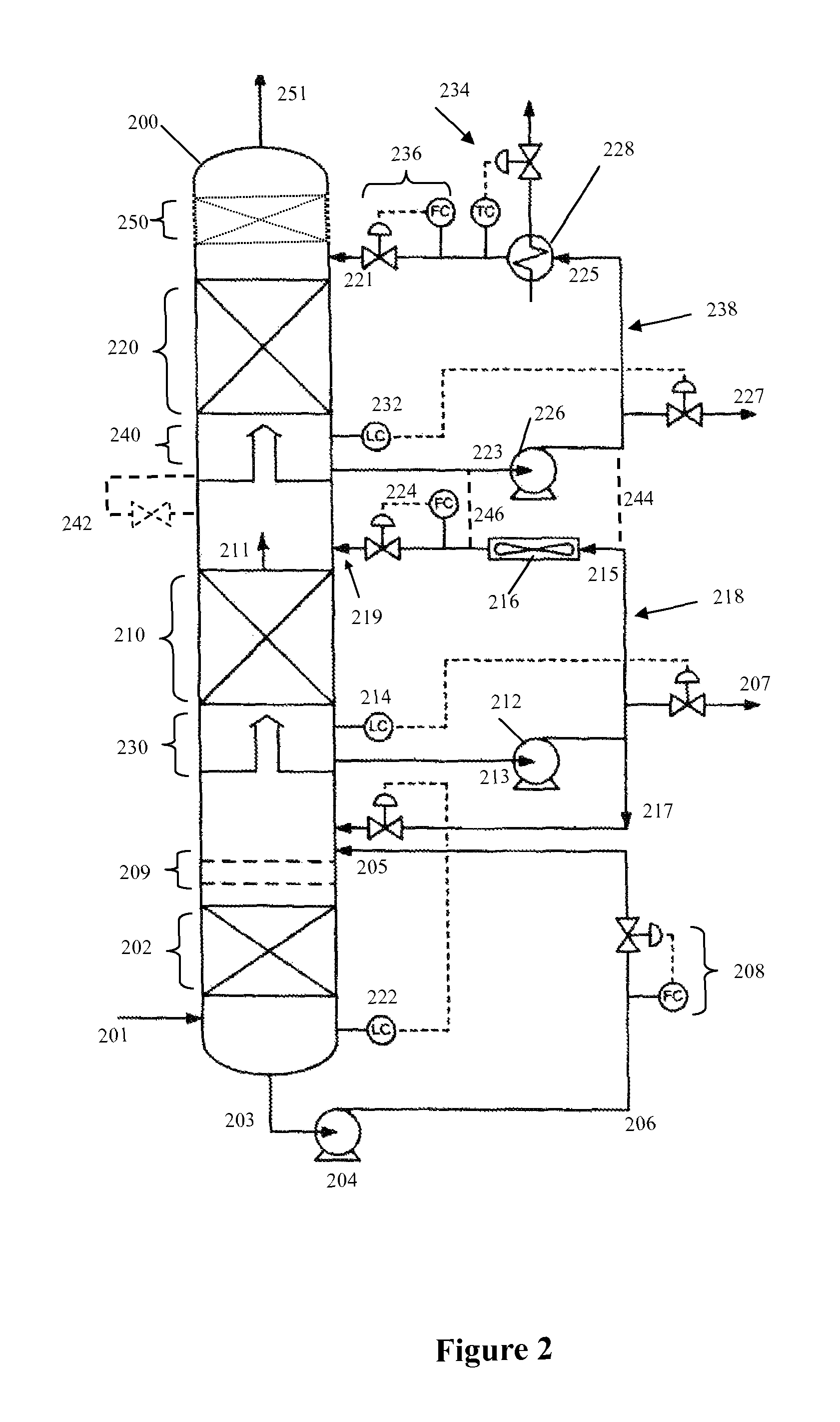Low-energy waste gas cooling using direct contact condenser
a direct contact condenser and waste gas technology, applied in the field of cooling process liquid systems and methods, can solve the problems of not being suitable for direct use in the treatment step, and achieve the effects of reducing the duty of refrigeration, reducing the cost, and increasing the availability
- Summary
- Abstract
- Description
- Claims
- Application Information
AI Technical Summary
Benefits of technology
Problems solved by technology
Method used
Image
Examples
Embodiment Construction
[0021]The inventors have discovered that external refrigeration can be minimized by splitting each of the direct-contact section and the pumparound circuit into two sections. Preferred configurations provide for an air-cooled bottom pumparound circuit and a top pumparound circuit that uses water or other non-air refrigerant. Viewed from a different perspective, it should therefore be appreciated that one cooling device operates with a coolant that is less expensive and / or has higher availability, while the other cooling device operate with distinct coolant. Thus, for example, by decoupling the pumparound circuits, some of the refrigeration duty normally required of the cooling device using external refrigerant can be shifted to the air cooler. Because of the cost difference between air and other refrigerants, such shift results in significant cost-savings.
[0022]Additionally, splitting the pumparound circuit allows for the circulation rate at each section to be increased (instead of ...
PUM
| Property | Measurement | Unit |
|---|---|---|
| temperature | aaaaa | aaaaa |
| temperature | aaaaa | aaaaa |
| temperature | aaaaa | aaaaa |
Abstract
Description
Claims
Application Information
 Login to View More
Login to View More - R&D
- Intellectual Property
- Life Sciences
- Materials
- Tech Scout
- Unparalleled Data Quality
- Higher Quality Content
- 60% Fewer Hallucinations
Browse by: Latest US Patents, China's latest patents, Technical Efficacy Thesaurus, Application Domain, Technology Topic, Popular Technical Reports.
© 2025 PatSnap. All rights reserved.Legal|Privacy policy|Modern Slavery Act Transparency Statement|Sitemap|About US| Contact US: help@patsnap.com



